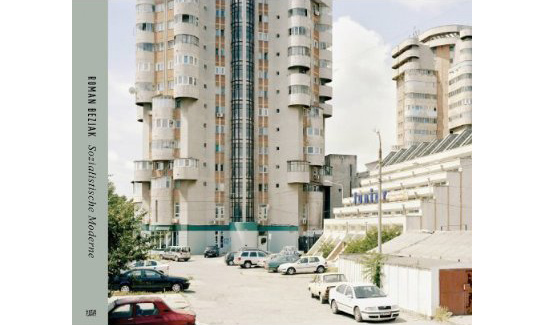Review: Socialist Modernism by Roman Bezjak

There are different approaches to Roman Bezjak’s Socialist Modernism. One can focus on the truly outrageous (here is an example) and then come to all kinds of conclusions about Socialism. Or one can focus on that which looks not quite so different from what you might find next door (many West German cities did - and still do - in fact look like this, and this building immediately reminded me a little bit of Boston City Hall) and wonder what is to be learned from that. (more)
A mix of both approaches, with maybe a focus on how Socialist modernism/brutalism isn’t quite so different from the Capitalist one, might be a good idea. I’ve long been fascinated by especially brutalism, so in part my choice is based on personal bias (I realize not all buildings in the book are brutalist). I’ve never got over the fact that people thought erecting those incredibly ugly raw concrete buildings was a good idea. It’s not as if architecture has not had its episodes of ugliness. But brutalism - that’s like three grand slams in a baseball game. That’s hitting the ugliness way out of the ball park. And it’s not just that the buildings were ugly when they were built. They got even uglier with time, since concrete looks worse and worse as it weathers.
Just as an aside, I once drove through downtown Boston with an architecture friend of mine who specializes in concrete, and while I wanted to gouge my eyes out she was very excited about all the buildings. It’s all a matter of taste.
I suppose the real irony here is that Socialism just happened to occur during the wrong architectural period. Imagine how we’d all pine for Socialism if its signature buildings were Philadelphia-style row houses, say! Instead, there is brutalism and modernism, incl. apartment buildings that, in fact, wouldn’t look out of place in various West German suburbs, either (here’s an example from around Paris: Nanterre).
What really might be happening here is that brutalist architecture perfectly matches the brutalist attitude displayed by the ruling parties during Socialism. Its fans might not enjoy me writing this, but if one had to think of architecture created with disdain for the people it was designed for that would certainly be brutalism. And Socialism very quickly ended up being just that: A political system based on an utter disdain for its subjects. The weird and/or kitschy murals or pieces of public Socialist art that you can find in many of those places literally only add the icing to the cake.
Socialist Modernism drives these points home forcefully. Its a fascinating book of architectural train wrecks, building so spectacularly ugly that you can’t help but stare in wonder.
Socialist Modernism, photography by Roman Bezjak, essays by Till Briegleb, Christian Raabe, Inka Schube, 160 pages, Hatje Cantz, 2011